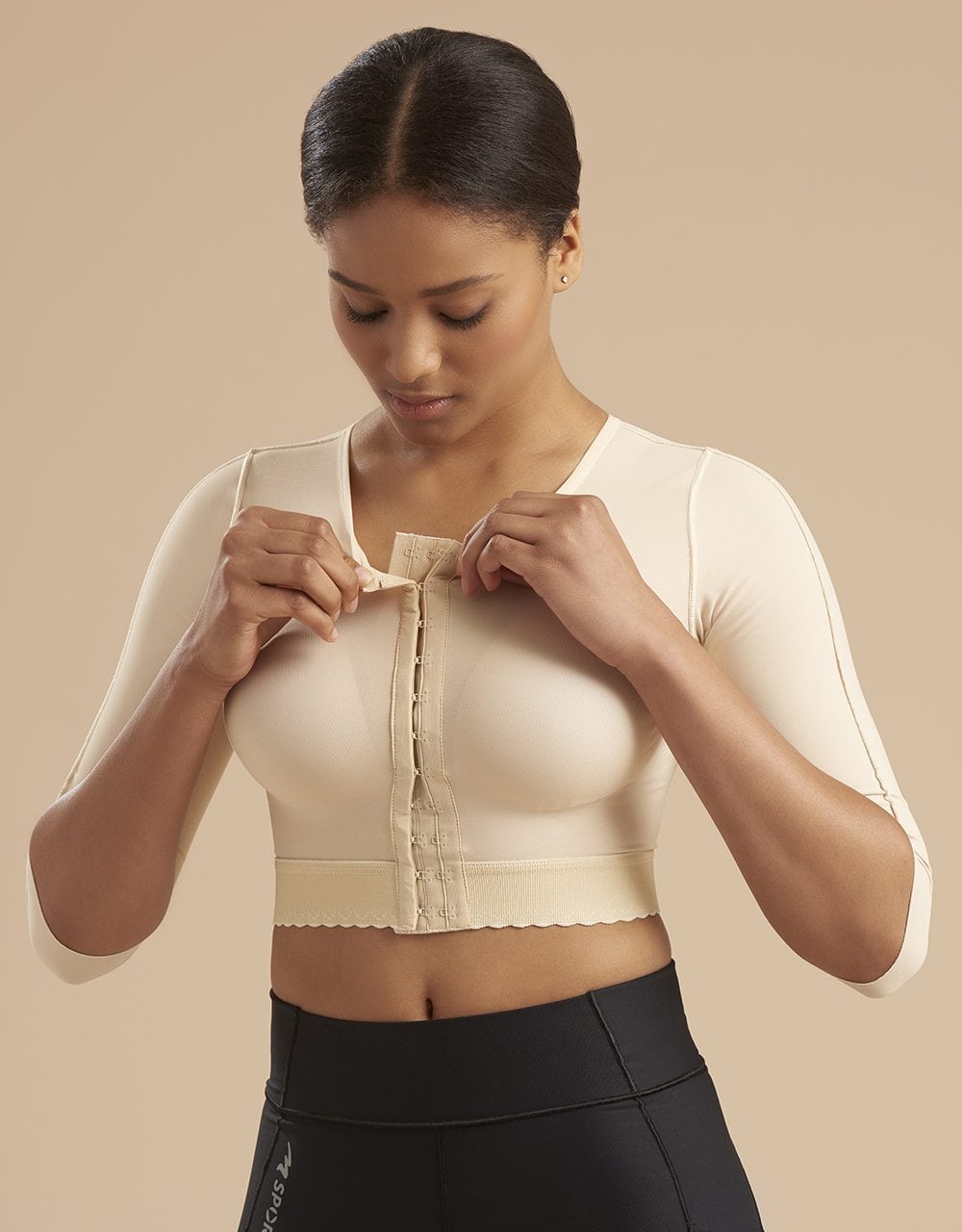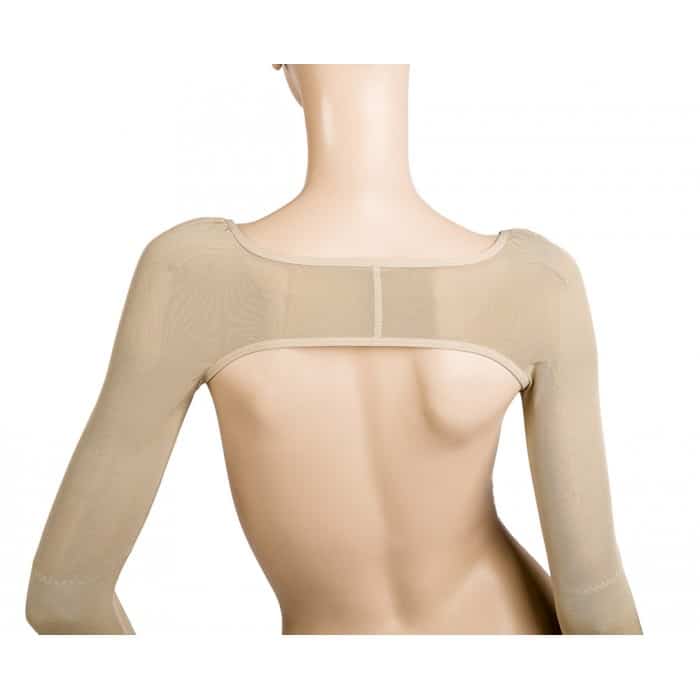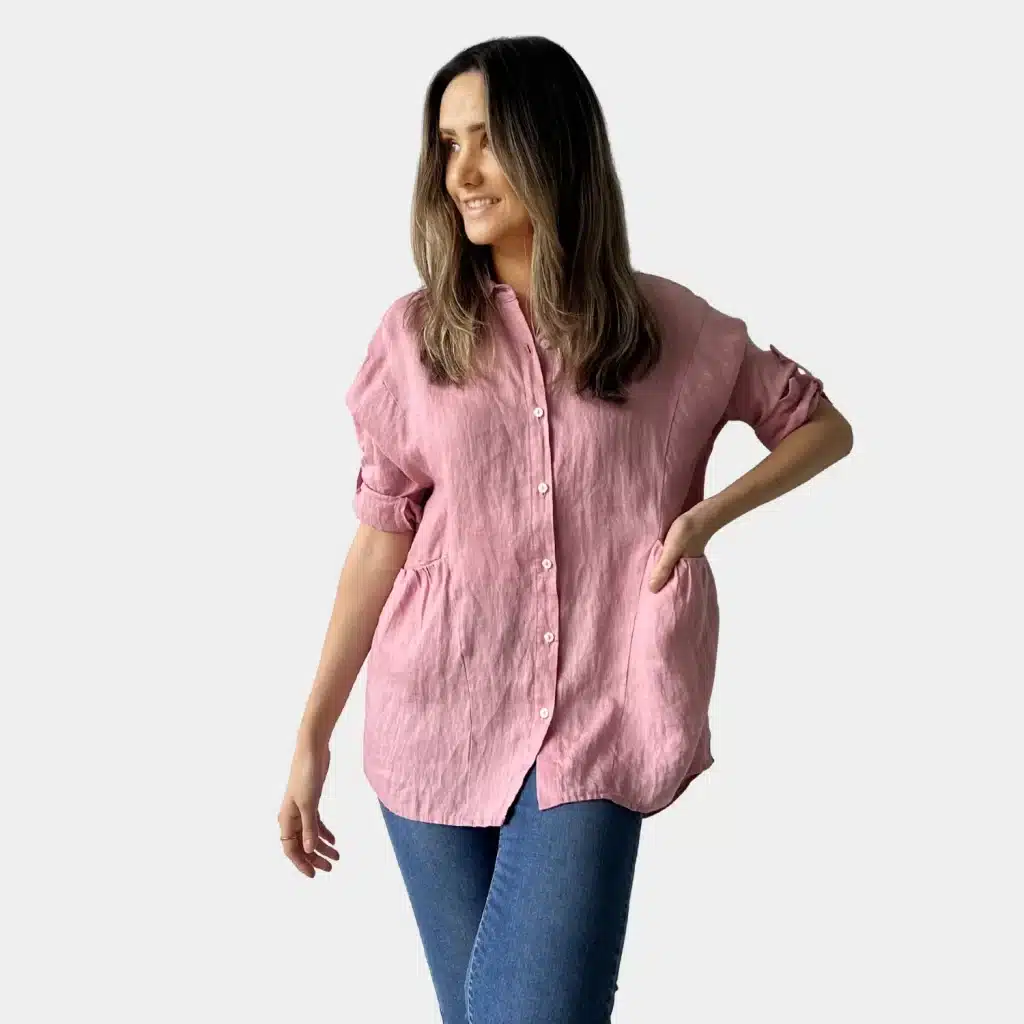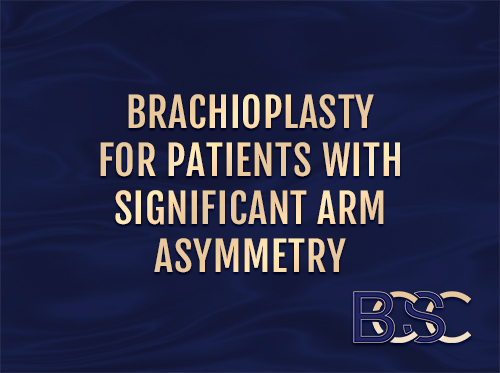What to Wear After Arm Lift Surgery
Compression garments and loose-fitting tops are an important part of arm lift recovery. Compression devices accelerate healing and reduce swelling post-surgery, while roomy, breathable clothes enhance patient comfort during the healing process.

Compression Garments
Most surgeons recommend wearing a compression garment after excess skin removal procedures such as brachioplasty. An arm compression garment is a soft, stretchy medical device that wraps around the arms. The elastic material applies constant, gentle pressure to the skin and underlying tissues. You may need to wear a compression sleeve for several weeks. Here is everything you need to know about buying and wearing the garments.

Marena Arm Back Shoulder Breast 3/4 Sleeve Surgery Vest – Medical Compression Garments Australia
Benefits of Compression After Brachioplasty
Wearing compression devices after arm lift surgery helps to support and reinforce the upper arms as they heal. Additional advantages may include the following:
Less Swelling After Surgery
Compression helps to reduce swelling in the upper arms, which can be pronounced immediately after body contouring procedures. (Ref 3 10)
A Potentially Less Painful Recovery
Gentle compression may lessen the pain experienced during the recovery process. (Ref 2, 8) Compression therapy is not a substitute for pain medication. Patients should continue taking pain medication as prescribed to stay ahead of the pain.

Disclaimer: Operation performed by Dr Bernard Beldholm. Adult content, surgery has risks; individual results vary, seek 2nd opinion. Please see the full disclaimer.
Better Tissue Adherence
Compression promotes tissue adherence as the upper arms heal from brachioplasty surgery, helping the skin and underlying components to conform to the new arm shape. (Ref 3, 7)
Prevent or Improve Keloid Scarring
Keloid scarring (a thick, hard, raised scar) is an abnormal scar formation that is more likely to occur in arm lift patients with a family history of keloids and those with dark skin tones. Medical references suggest compression therapy may reduce the risk of keloid scars by helping to keep the scar tissue soft. (Ref 5, 11)
Keep Germs Out
Compression garments shield the incision sites from germs in the environment, although the garment must be kept clean to prevent infection.
Lower Risk of Cellulitis
Cellulitis is one of the possible complications of arm lift surgery. This bacterial skin infection is relatively uncommon, but it can be serious. Research suggests wearing compression devices can decrease the risk of developing cellulitis. (Ref 4, 10)
Assist in Wound Healing
Compression sleeves increase oxygen levels within the healing tissues of the arm, potentially instigating faster tissue repair. (Ref 1, 9)
What to Look for in Compression Garments

Post Surgical Arm Compression Garment – Sleeve | Arm Lift
All compression garments are not created equal. Some are of higher quality than others, and this can make a big difference in terms of your comfort. Follow these tips when buying compression garments.
Materials
High-quality compression sleeves are made from soft, breathable materials. It should not feel scratchy or itchy against the skin.
Proper Fit
The compression garments should feel snug and supportive. It should not fit too tight or cut off circulation to the arms. Garments can be purchased at an online medical supply store or custom-made to fit your exact measurements. Check with your surgeon first, since some include the garment in the cost of surgery.
Flat Seams
Seams can irritate or rub against the skin. Seamless designs or flat, nicely sewn seams are a more comfortable option.
Features
Brands (like LIPOELASTIC®) are made with 3D perforated material to improve breathability and support optimal blood circulation. (Ref 6) Fabrics containing silver nanoparticles may ward off odor-causing bacteria. (Ref 6)
Compression Sleeve FAQs
How long should I wear the compressive garment after arm lift surgery?
The length of time varies from surgeon to surgeon. The average time is six weeks.
Should I wear the arm compression device all day?
Generally speaking, arm lift patients can expect to wear to garment 24 hours a day for two to four weeks, and then half the day for a few more weeks.
Is it okay to take the compression device off if I need a break?
The compression bandage should be removed to shower or when it needs laundering. If the garment is uncomfortable or feels hot, it is safe to remove it for a few minutes now and then.
How often should I wash my arm lift compression garments?
It is important to keep your arm compression garments clean. Immediately change soiled garments or if you notice an odor. It’s a good idea to buy two garments so you have one to wear while the other is in the wash. Follow care instructions to avoid damaging the garment in the washer or dryer. Excessive heat may shrink the garment or damage the elastic fibers.
Will I need to buy my compression garment?
You may be able to purchase the garment directly from your surgeon. Sometimes, it is included in the cost of arm lift surgery, but that is not always the case. Ask your surgeon if it will cost extra. If your doctor does not offer compression garments, you may purchase them from a medical supply store. Be sure to get it done a few weeks before your surgery to ensure the garments arrive in time. You will likely need to wear the garment immediately after your arm lift surgery.
My surgeon told me I don’t need to wear a compression garment. Should I wear it anyway?
Not all surgeons agree on the benefits of compression devices after body contouring surgery. You should always follow your surgeon’s instructions carefully. If they tell you not to wear the garment, trust their judgment.
What clothes should I wear when leaving the hospital?

A loose-fitting tracksuit, loungewear, or pajamas in soft, breathable materials will be most comfortable to wear when returning home from the hospital. Do not wear clothing that is tight or constrictive. The goal is to be comfortable and allow plenty of room since swelling and discomfort are typical after upper arm lift surgery.
What should I wear while recovering from arm lift surgery?
Follow these wardrobe tips for a comfortable recovery.
Shirts That Open in the Front
Raising your upper arm over your head to get dressed can be uncomfortable, especially in the first one to two weeks. To make changing clothes easier, choose casual button-down tops, cardigans, or blouses that open in the front.
Loose, Comfortable Fit
Avoid clothing that is tight and constrictive. Tops must be loose enough to accommodate post-operative swelling and allow room for the compression garment to be worn underneath.
Breathable Materials
Tops should be made of natural fabrics (such as 100% cotton) that breathe well. Avoid itchy fabrics and synthetic materials like polyester, which traps body heat and odors.
Long Sleeve Tops
Long sleeves will protect the surgical scars from sun exposure and keep the scars hidden from view as they heal. You can wear short sleeves and singlets if preferred, but be sure to apply broad-spectrum sunblock if you will be outside.
How soon can I wear regular clothes after arm lift surgery?

AMYIC LINEN LOOSE SHIRT – Denim Culture Online
Swelling can be significant immediately after the operation. It will likely be several weeks before you are ready to wear figure-hugging attire. That said, you can wear street clothes, including fitted shirts, as soon as you feel comfortable. Once healed, there will be plenty of time to experiment with fashionable clothing you may not have felt comfortable wearing before the arm lift procedure.
Will clothing hide my arm lift scars?
The surgical scars are the main disadvantage of arm lift surgery. This is something you should speak to your surgeon about before deciding to book the operation. For many patients, the results of an arm lift surgery are worth it despite the scars.
Arm lift scars don’t heal overnight. They can be raised, firm, and dark in colour initially. Arm lift scars fade after 12 to 18 months on average. Well-healed scars typically blend in nicely with the surrounding skin, but the scars will never disappear completely.
Clothing choices may be somewhat limited for patients that prefer to keep their surgical scars hidden. However, many patients feel comfortable enough with their scars to wear short sleeves and sleeveless tops after arm lift surgery.
Additional Tips for a Safe, Successful Recovery
Arm lift surgery is a worthwhile option for many people with extra skin on their upper arms, as well as those with excess upper arm fat that resists diet and exercise.
Like any surgery, risks are possible. Be sure to follow your surgeon’s aftercare instructions, including what kind of clothes and compression garments to wear, to boost the odds of a successful recovery.
Your surgeon should provide detailed instructions for the first six weeks to three months. Light physical activity, getting enough sleep, staying hydrated, abstaining from nicotine and alcohol use, and avoiding blood thinners, heavy lifting, and strenuous activity will optimise healing. Patients must also attend follow up appointments so their surgeon can monitor for unusual symptoms and complications.
References
- Agu, Obi, Daryll Baker, and Alexander M. Seifalian. “Effect of Graduated Compression Stockings on Limb Oxygenation and Venous Function during Exercise in Patients with Venous Insufficiency.” Vascular 12, no. 1 (2004): 69-76. doi:10.1258/rsmvasc.12.1.69.
- Bush, J. A., N. D. Duncan, L. A. Gotshalk, S. Meth, C. R. Denegar, M. Putukian, W. J. Sebastianelli, and W. J. Kraemer. “Influence Of Compression On Symptoms Of Soft Tissue Injury Following Maximal Eccentric Exercise.” Medicine & Science in Sports & Exercise 30, no. Supplement (1998): 286. doi:10.1097/00005768-199805001-01627.
- Dixit, Varunv, and Milinds Wagh. “Unfavourable Outcomes of Liposuction and Their Management.” Indian Journal of Plastic Surgery 46, no. 2 (2013). doi:10.4103/0970-0358.118617.
- Forte, Antonio J., et al. “Lipoaspiration and Controlled Compressive Therapy in Lymphedema of the Upper Extremity: A Comprehensive Systematic Review.”Cureus, Cureus, Inc., Sept. 2019.
- Kennard, Jerry. “What Are Keloid Scars?” Verywell Health, Nov. 2022, www.verywellhealth.com/keloid-scars-2328343.
- Lipoelastic. Compression Garments – LIPOELASTIC-BH.COM. www.lipoelastic-bh.com/products/compression-garments..
- Lothrop, Oliver. “ An Operation for Correcting the Aquiline Nasal Deformity. The use of a New Instrument. Report of Case.” The Boston Medical and Surgical Journal, vol. 170, o. 22, 1914, p.836.
- Miller, Anya. “Impact of Seamless Compression Garments on Limb Functionality, Comfort and Quality of Life.” British Journal of Community Nursing 22, no. Sup10 (2017). doi:10.12968/bjcn.2017.22.sup10.s26.
- Saeed, Summaya, et al. “Use of Abdominal Binders After a Major Abdominal Surgery: A Randomized Controlled Trial.” Cureus, Cureus, Inc., Oct. 2019.
- Webb, Elizabeth, et al. “Impact of Compression Therapy on Cellulitis (ICTOC) in Adults With Chronic Oedema: A Randomised Controlled Trial Protocol.”BMJ Open, vol. 9, no. 8, BMJ, Aug. 2019, p. e029225.
- Wolfram, Dolores, Alexandar Tzankov, Petra Pülzl, and Hildegunde Piza-Katzer. “Hypertrophic Scars and Keloids—A Review of Their Pathophysiology, Risk Factors, and Therapeutic Management.” Dermatologic Surgery 35, no. 2 (2009): 171-81. doi:10.1111/j.1524-4725.2008.34406.x.


![Are You a Candidate for Arm Lift Surgery? [Brachioplasty]](https://bodycontouringsurgery.com.au/wp-content/uploads/2023/07/BCSC_Ideal_candidates_for_brachioplasty-featured_image-1.jpg)
